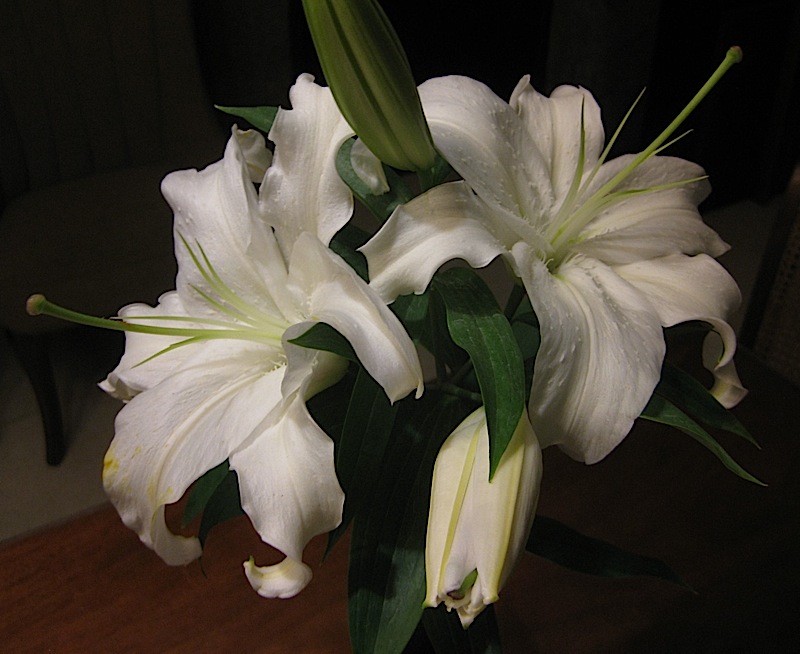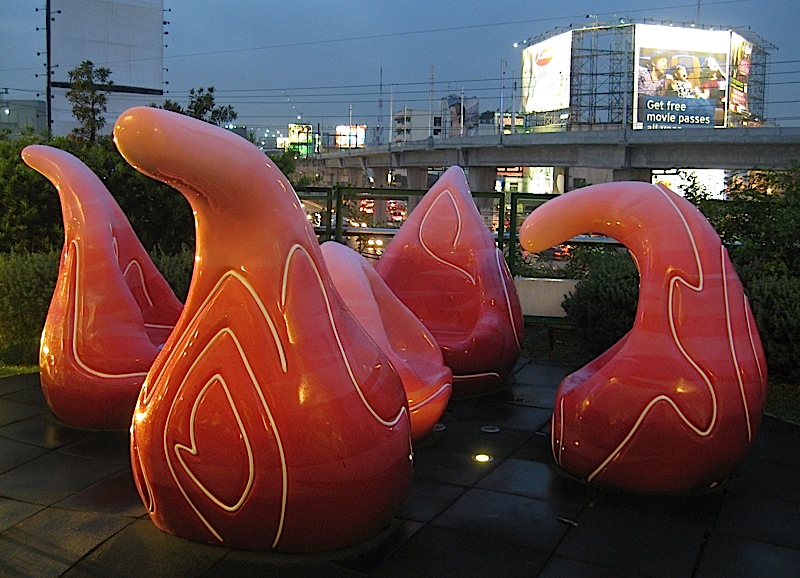
August 31, 2010
Bloom where you are planted
Of all the colorful sculptures of Joel Ferraris at the Sky Garden of SM City North EDSA mall, Bloom is the only one with a practical application. I've seen people sitting on them, although mostly just to pose for photos. Wouldn't it be fun to have garden chairs like these?


August 30, 2010
Crispy goodness
We-ell, if you have to control your cholesterol levels, then this isn't quite good for you. Crispy Pata is another favorite Filipino dish. Pata is the Tagalog word for thigh, but the dish consists of a whole pork leg (bone, skin and knuckles included)—boiled or pressure-cooked, dried well and deep fried. Crunchy outside, tender inside, served with a dipping sauce made of vinegar and soy sauce. The only thing better than Crispy Pata? Boneless Crispy Pata, like this one. Parsley, spring onion and red onion garnish optional.


August 29, 2010
Old and new
The facade and bell tower of the Minor Basilica of San Lorenzo Ruiz, better known as Binondo Church after the district in the City of Manila where it is located, date back from 1852 and are the only parts of the church, built by Spanish Dominicans for Chinese immigrants who converted to Christianity, which survived WWII. The roof over the driveway is definitely part of the 1946 to 1984 restoration, as you can tell from the smoothness of the stone.


August 28, 2010
Looking after the future
Metro Manila's sewerage system is one of the worst in Asia. We do not have sewers, only drains. Which means that we do not have a centralized sewage treatment plant either and that is why our rivers are all dead. The government-owned public utility company Metropolitan Waterworks and Sewerage System (MWSS), which was supposedly responsible for water distribution and sewerage but did poorly in both counts, was privatized in 1997. Manila Water holds the concession for the eastern half of the metro, which includes Quezon City, where my husband and I live and work. During its first decade, its main concern was to get water to those areas which still didn't have running water and to plug all the wasteful leaks in the system. It has done quite well with those particular tasks and, at the start of its second decade, it began the even bigger task of getting a proper sewage system in place. It has finally reached our barangay and we've been living with the noise of jackhammers for several weeks now. This is what the road which connects to our street looked like last week and our own street will look like it sometime in the near future. We're not complaining, and I have not heard of anyone in our neighborhood complaining either, which I think is wonderful. It will take a long time, but there is hope for Metro Manila's rivers and waterways yet.
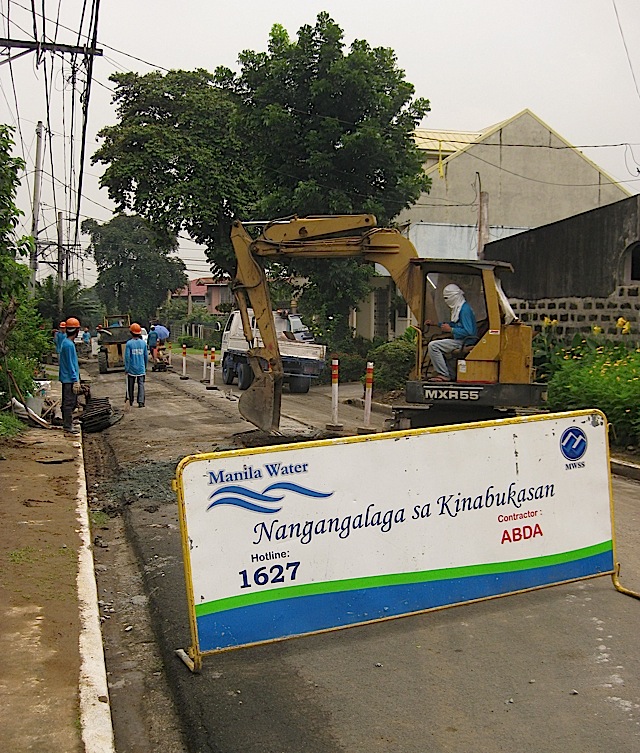

August 27, 2010
Danger in disguise
No, it's not a rock. It's found underwater in the coastal areas of the western Pacific Ocean, but neither is it coral. It just happens to be one of the most venomous fish in the world, though I saw it safely behind glass at the Manila Ocean Park. The Estuarine Stonefish (Synanceia horrida) camouflages itself among rocks at the bottom of tropical reefs, where it lies in ambush for shrimp and small fish to swim by. If you are having a difficult time seeing the fish, try to locate its deeply-frowning mouth on the left, then its dark eye bugging out, one fin at the bottom of the tank, and finally, the venomous spines which run along its top. See it now?


August 26, 2010
Everything has a price
ZeKaf opened in the basement of the new dormitories of the Ateneo de Manila University late last year. With flowers on the tables, warm light, earth colors and a photo mural in sepia tones, it looks pretty good for a school cafeteria. I'd call it a café rather than a cafeteria if it weren't for the fact that their food counter still looks like those found in any school cafeteria anywhere in the world. The food's good too but, compared to the other cafeterias on campus, their prices are higher and the serving sizes are smaller. I guess ambiance doesn't come cheap.
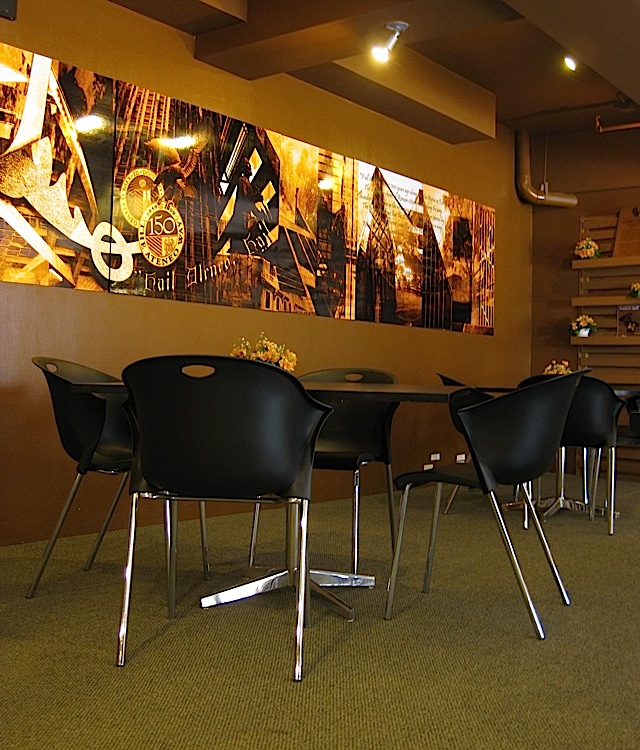

August 25, 2010
Fast and cheap
Greenhills Shopping Center has a restaurant row at the Promenade. Behind one of the buildings which leads to the supermarket, it also has a row of food stalls along the sidewalk. Needless to say, the food and drinks here are much, much less expensive than those at the Promenade.
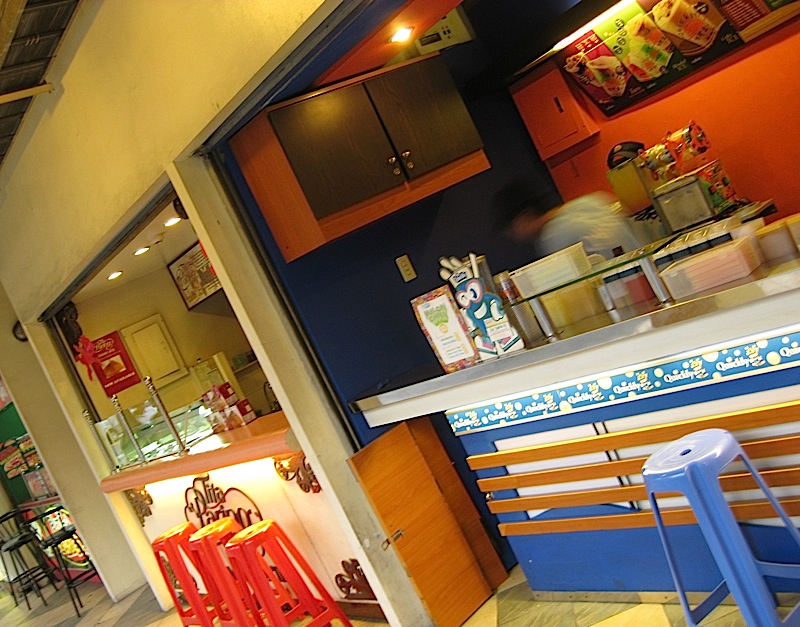

August 24, 2010
We live here
Eunilaine Foodmart is our neighborhood grocery which is only a 15-minute walk from our house. After shopping, when I already have my heavy grocery bags, I just take a tricycle back to the house. The company that owns Eunilaine has another grocery elsewhere in Quezon City and a pharmacy which is built into their two buildings. Eunilaine has been in our neighborhood for many years and I've seen it expand, go digital and change layouts so many times. This past year, a branch of Save More Supermarket opened just a couple of kilometers away. Save More is a large chain owned by the even larger SM Group of Companies, the same company that has a gazillion, humongous malls all over the Philippines, aside from many other kinds of businesses. I don't know how it has affected Eunilaine, but I think it's too much to hope that it didn't have an impact on "my" grocery's sales. Eunilaine's banner sums up well how I feel about the situation: "Why shop at Eunilaine? We live here, we bank here, we work here, we hear mass here, we do business here, our children study here, our good friends are here, it makes sense shopping here, we love it here."
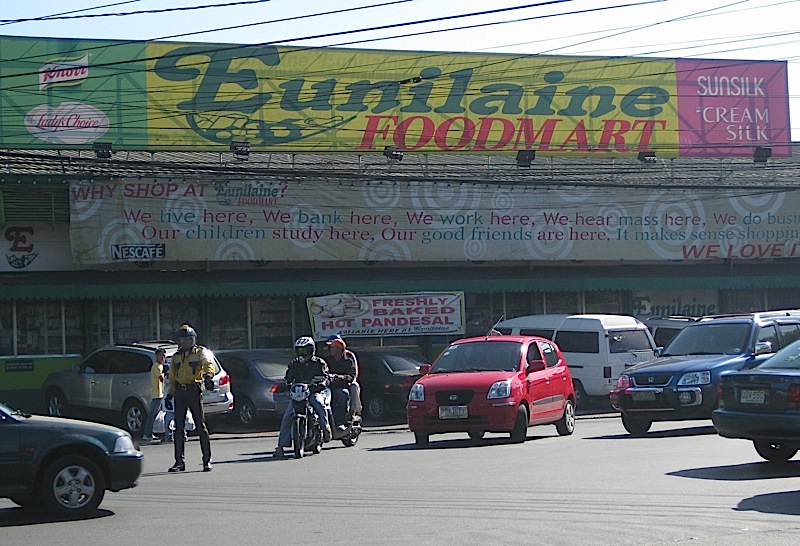


And That's My World!

August 23, 2010
P is for Pilipinas
Before the Spaniards came and conquered the islands in the 16th century, our ancestors in the big island of Luzon already had a written language. Called Baybayin, it was the alphabet of the spoken Tagalog and Kapampangan languages, and shares its origin from the ancient Brahmi script of the Indian subcontinent with many other Asian languages. After more than four centuries of colonial rule, however, we no longer use Baybayin regulary and very few people can write in it with any facility. But the logos and abbreviations of many of our government institutions still use the alphabet's individual letters. The logo of the National Museum of the Philippines is the Baybayin "P" in the middle of a stylized sun. This rendition in marble is on the floor of the main lobby of the National Art Gallery.
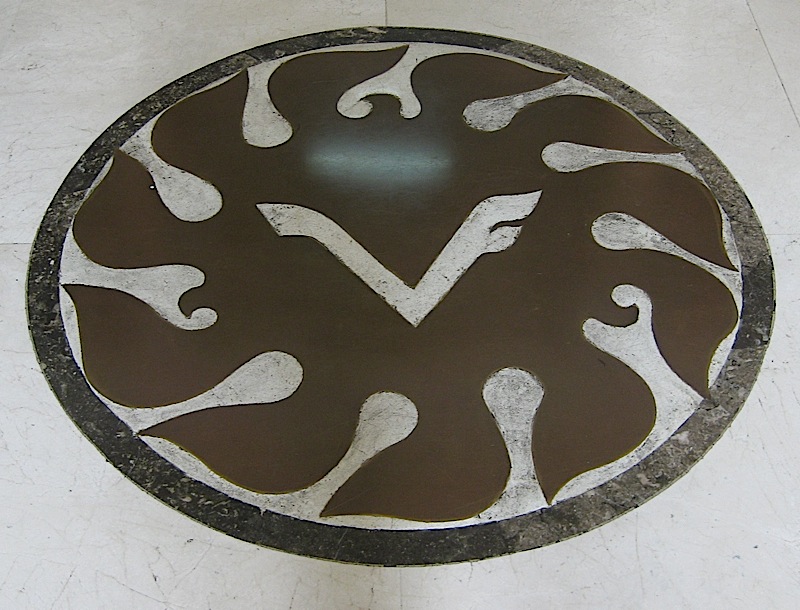
Reminding all CDP bloggers yet again: our theme for September 1 is Open-air Markets (so difficult for me!) and the poll is ongoing for the October theme. Please vote and help spread the word!

Reminding all CDP bloggers yet again: our theme for September 1 is Open-air Markets (so difficult for me!) and the poll is ongoing for the October theme. Please vote and help spread the word!
August 22, 2010
Cross on green
This is the pedestrian bridge that crosses Katipunan Avenue from Miriam College, which is exclusively for women from grade school to college. Like its neighbor, Ateneo de Manila University, the college keeps a security guard on or near the bridge for the safety of its students. The footbridge is basically of the same design as the one in front of the Ateneo a kilometer away which I posted last month, except that it doesn't have a roof. I don't know if it was done on purpose, but the bridge's green paint happily matches Miriam's school color.
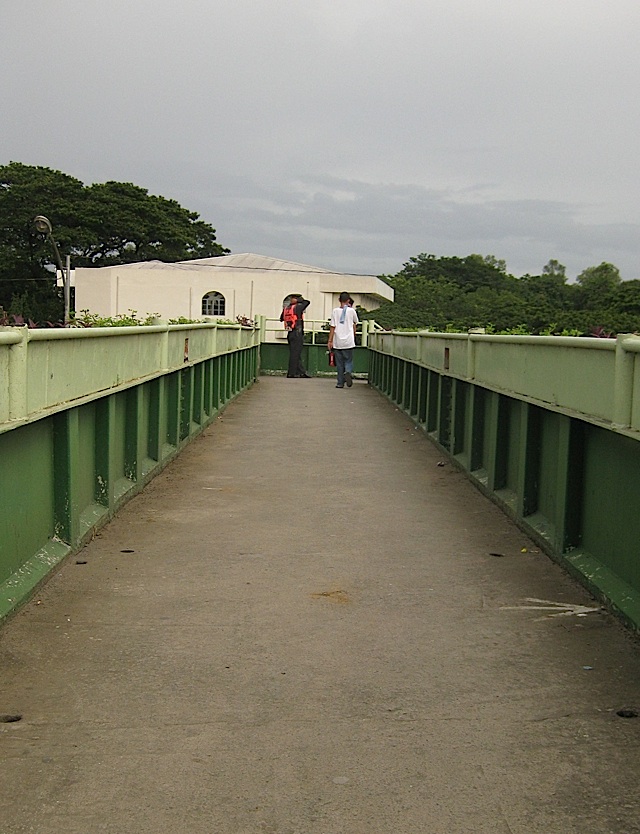


Bridges around the world: Sunday Bridges

August 21, 2010
Happiness is…
August 20, 2010
The Tent
Here is another view of the still mostly empty lands of Bonifacio Global City (BGC) in Taguig City, including part of the parking lot of the posh dining and shopping center that is Bonifacio High Street. Except for the first few buildings constructed in the area soon after much of the army's land was sold to the highest private bidder, almost all the buildings in BGC are high-rises. One of the most notable exceptions is the NBC Tent, which you can see a bit to the right and two blocks away. It's an events venue that can be rented and it really is just a tent, though a large and air-conditioned one. It is most notable for hosting the (more than) monthly Shop@The Fort bazaar organized by Karl Edwards International. I've only gone once but that one trip helped me understand why the bazaar has been around for years. Export over-runs, original, unique and locally-designed clothes and accessories, home-made spreads and baked goods—let's just say that that one trip left a pretty big hole in my purse, and I am both dreading and looking forward to my next Karl Edwards bazaar experience.
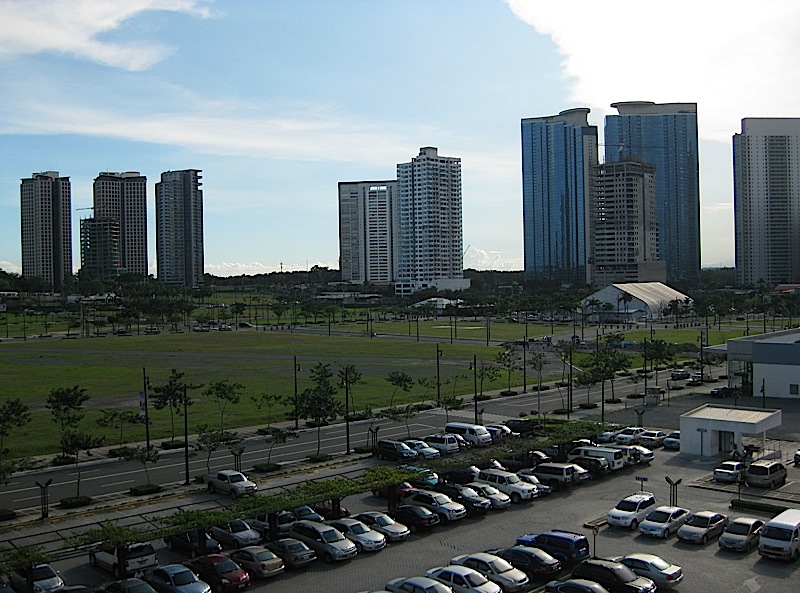

August 19, 2010
Nurturing gifted children
Akademeia opened in a converted house in our barangay less than five years ago. Unfortunately, I don't know anything about it except what I've read in its no-longer-updated Multiply site. Having studied in a traditional school as a child, I really like the idea of small class sizes and individualized instruction with special programs for gifted children. If you have three minutes, do take a peek at the "Another One Rides the Bus" video posted in its old Multiply site—the two little boys are talented, hilarious and absolutely adorable!
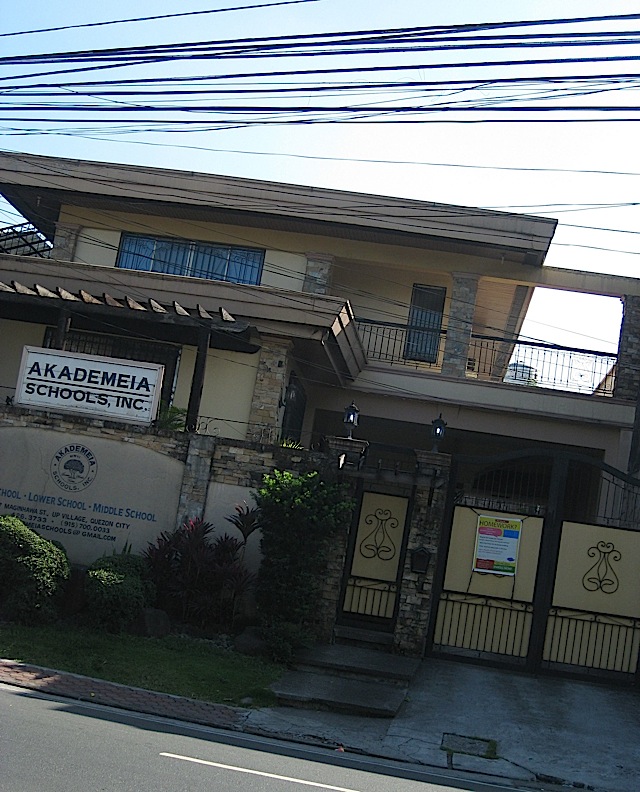

August 18, 2010
Still life with fountain
Simple lines, warm colors and fabulous textures at the foyer of Kimpura Japanese restaurant.
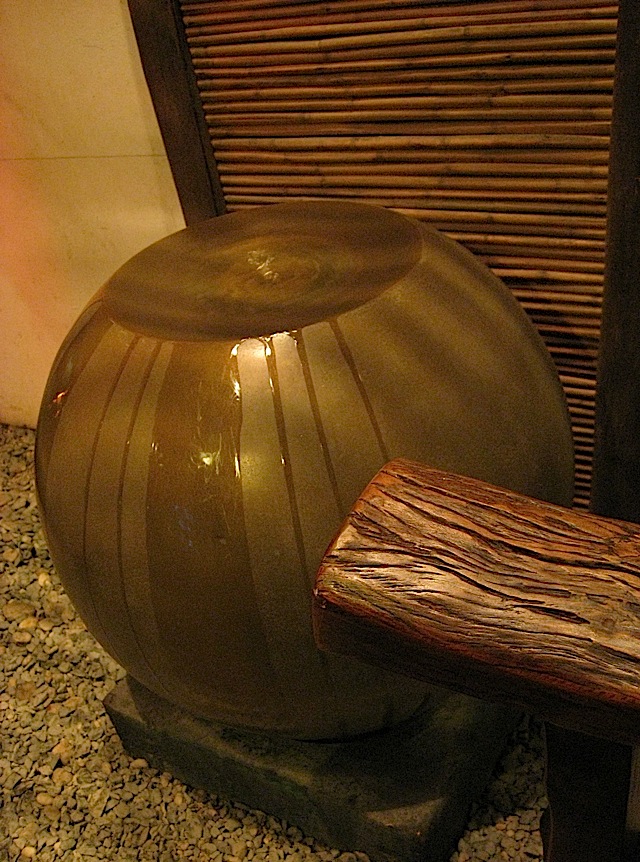


Natural or man-made, take a refreshing dip in Watery Wednesday.

August 17, 2010
All about Quezon
Here's a closer look at the bas-relief on the oddly-shaped Mid-Century Modern building in Quezon City Hall which I first posted more than one year ago (and before you ask, no, I still don't know what's inside the thing). I can see the Quezon Memorial and the Oblation statue of the University of the Philippines on the relief, and many of the other scenes feature Manuel L. Quezon, the first president of the Commonwealth of the Philippines and the man after whom the city is named. One particular scene strikes me the most, the one where he is ankle-deep in mud and planting rice. What I'd like to know is, until what year did the city still have rice fields??
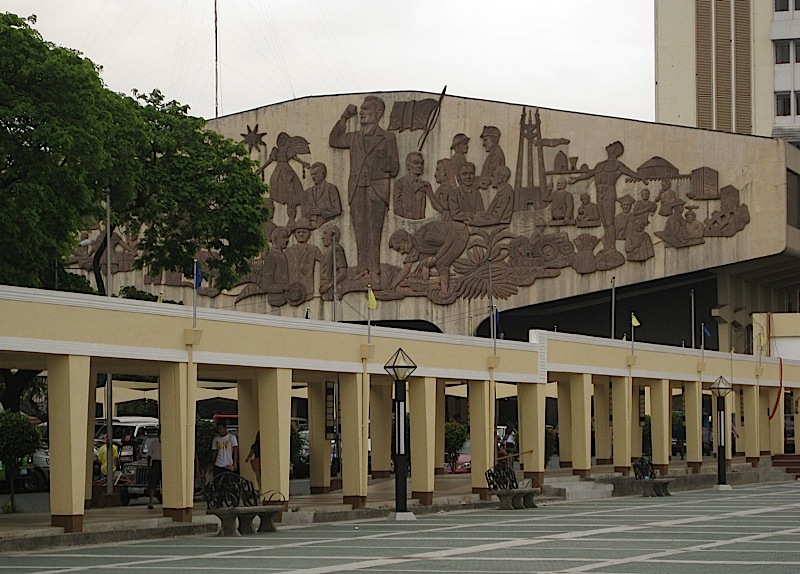

August 16, 2010
Fancy feet
Traditional, handcrafted products still abound in the Philippines, including Metro Manila. I saw these hand-beaded slippers in Binondo, Manila's Chinatown, and they were selling for only 285 pesos (just a little more than six U.S. dollars).
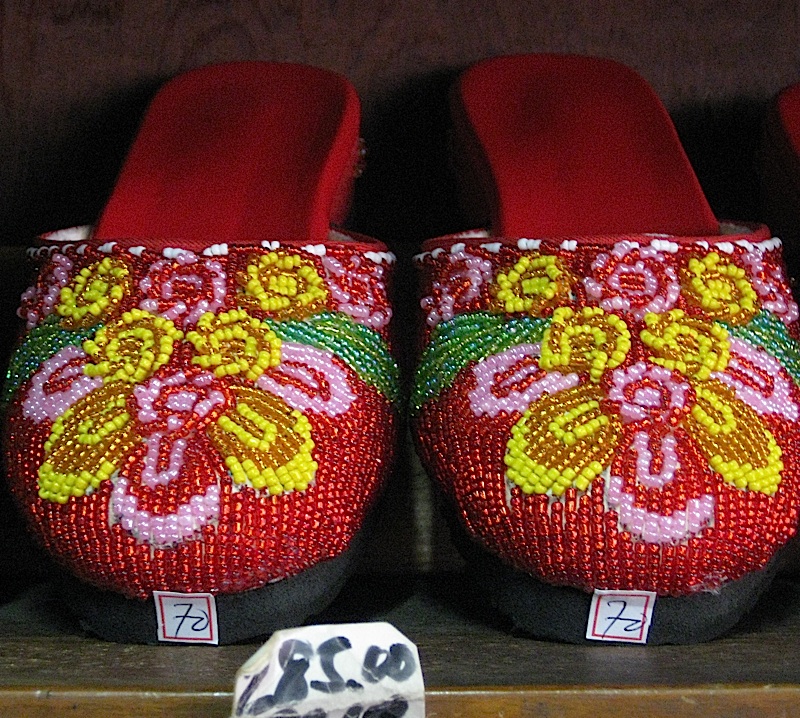

August 15, 2010
God and mammon
The Philippines is the only country I know where Sunday Masses are celebrated in shopping malls. They are usually held in big, open areas where performances and other special events also take place. Some shopping centers that have many buildings sprawled over a large space even have their own chapels. I showed the one in Greenbelt last year. This one is the Chapel of the Holy Family in the Greenhills Shopping Center in the City of San Juan.
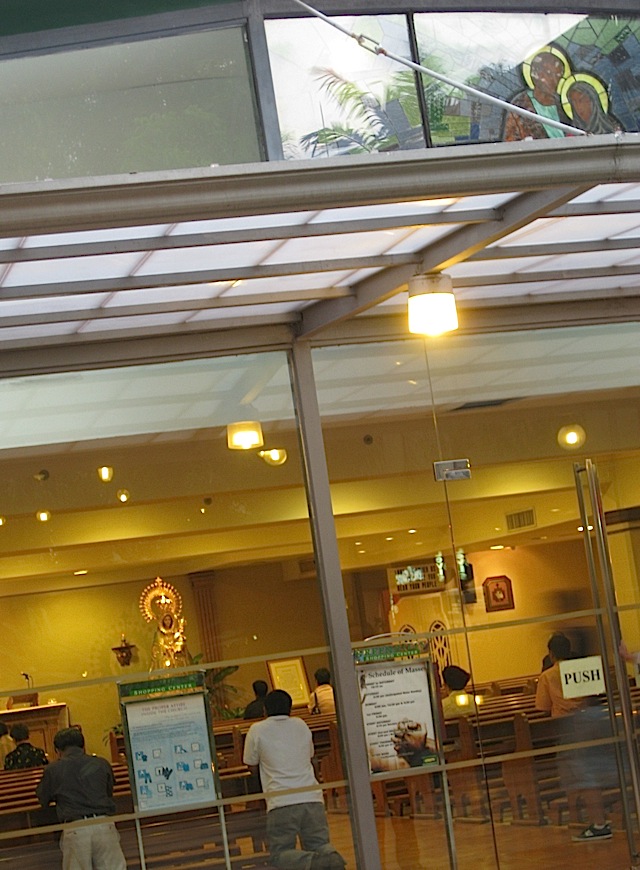

August 14, 2010
Warm
A row of lovely floor lamps at Sofitel Manila's 7Pecados by the Bay.
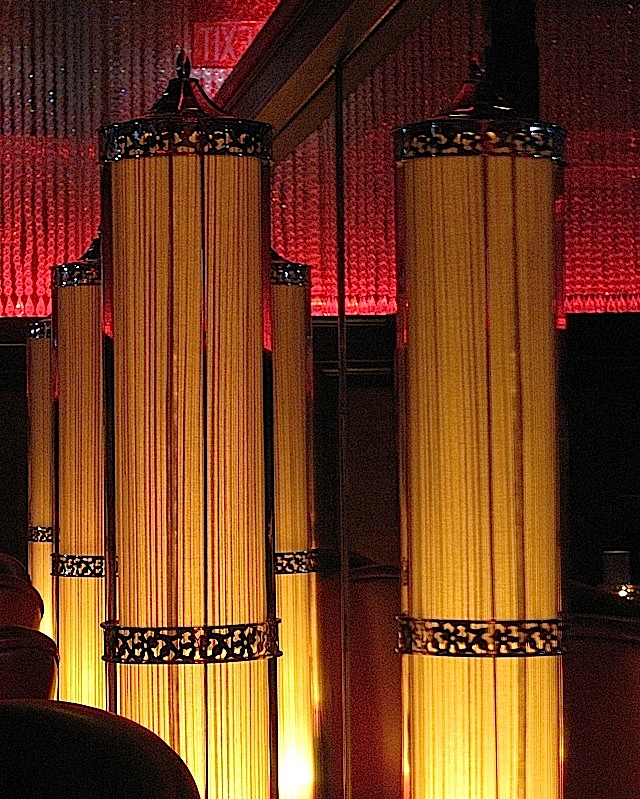


See what's reflecting what at James' Weekend Reflections.

August 13, 2010
Strapped
A new kiosk that I recently discovered in some malls here, Asprey (which has nothing to do with the British luxury goods store) has nothing except watch straps. They have straps in leatherette, rubber, plastic and real leather, all the colors of the rainbow, and a wide range of widths. Even if the way the strap is attached is unusual, they will accommodate the replacement request, spending time carefully slicing tiny portions out of the tough leather.
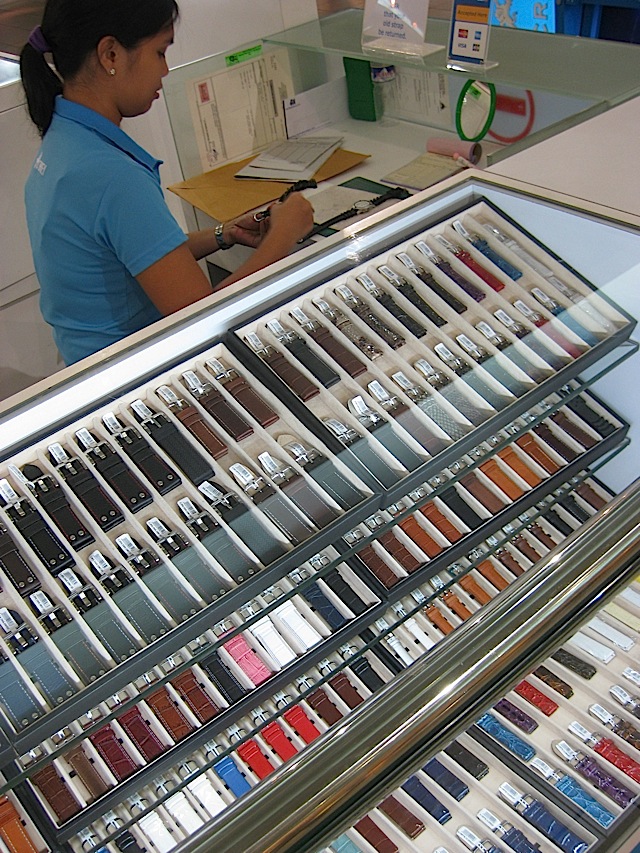

August 12, 2010
Street whimsy
A very different kind of art from yesterday's post. This motley crew adorns one end of the pedestrian overpass beside Citimall in Quezon City.
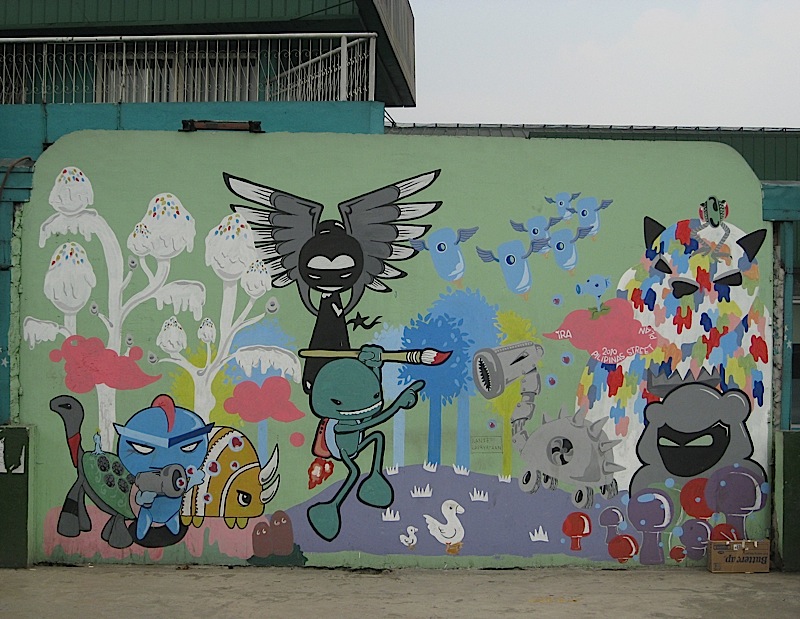

August 11, 2010
Art as activism
Kiri Dalena, here being photographed by Cocoy Sarmenta, is a visual artist and film director.
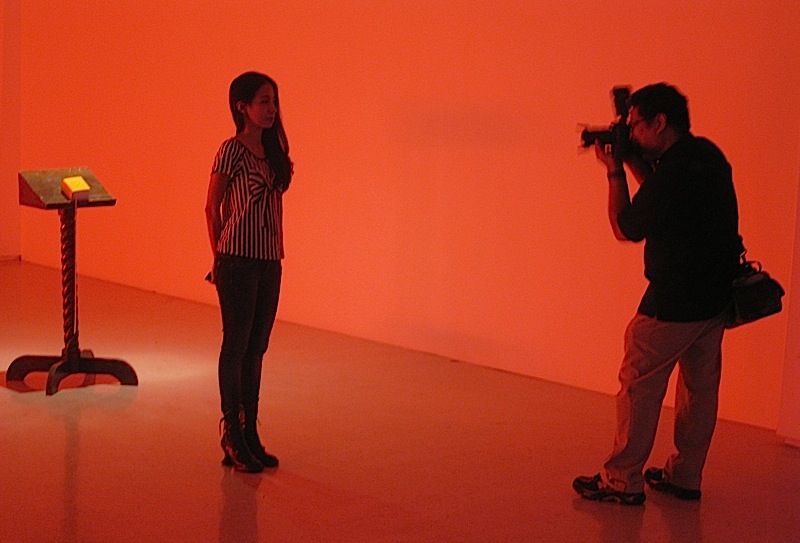
Her installation Watch History Repeat Itself is on display in the Ateneo Art Gallery until August 16.
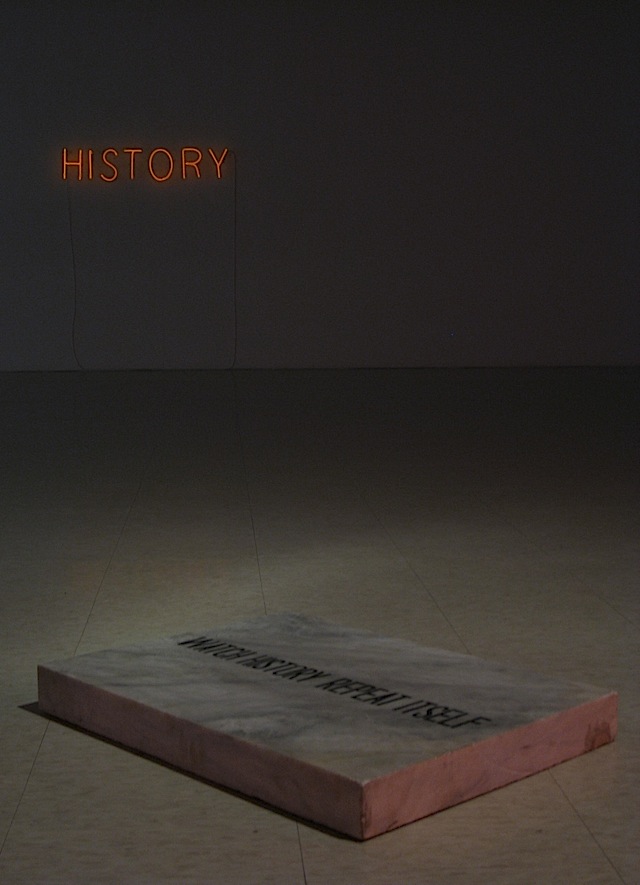
This is not art which is meant to decorate a room to make it pretty. It is art that wants to say something. And in Dalena's case, that something is Philippine political commentary, executed ironically in blinking, commercial neon. Below is an excerpt from the essay "History in Translation" written by film maker and writer Adjani Arumpac, and a video tour of the complete exhibit taken by Manila Art Blogger.

Her installation Watch History Repeat Itself is on display in the Ateneo Art Gallery until August 16.

This is not art which is meant to decorate a room to make it pretty. It is art that wants to say something. And in Dalena's case, that something is Philippine political commentary, executed ironically in blinking, commercial neon. Below is an excerpt from the essay "History in Translation" written by film maker and writer Adjani Arumpac, and a video tour of the complete exhibit taken by Manila Art Blogger.
- A blinking white neon sign screaming Liar! Liar! Liar! randomly illuminates a black room, recalling reactions to statements issued by the Gloria Macapagal-Arroyo government—from the infamous Hello Garci controversy to over 1,000 alleged extra-judicial killings throughout its nine-year reign. A red neon sign that floods red light in a white vacant area reads Dear activist, write a slogan for me tenderly invites one to contemplate past and ongoing brutalities denounced by various sectors in countless angry statements against the government.
- That neon signs, ubiquitous visual polluters and commercial vendors of the modern world, give light to such provoking statements reveals what the artist sees as a paradox—commercial and political interests of the ruling elite are protected by the state through various mechanisms such as brute armed strength.
- Dalena's aesthetics banks on a pervading sense of terror in real-time, continuing. But this sense of immediacy and urgency, an energy usually taken out in the streets, is forcefully brought to a standstill by the artist. She chooses to show tragedy as history, as clearly advertised by a blinking neon light that spells History. In the same vein, transferred in the Yellow Book of Slogans are rally calls culled from photo-documentation of rallies waged against the nine-year Arroyo regime. Likewise, inscribed in a single funerary slab are the haunting words: Watch History Repeat Itself, an abridged text displayed during Cory Aquino's funeral march.
- Dalena wrests these texts out of the streets and entombs them in forms and mediums that significantly depart from traditional protest art, wherein prime is given to fast production, accessibility and portability, whose end is to provide visual support for street mobilizations. She doubly gives weight to her cause, literally, by trading permanence for transience through writing ephemeral protest call in black and white and in stone.
August 10, 2010
Interesting roof lines
I wish I could tell you what these four building in the Ortigas Center are, but I can only identify the two in the middle. The one with the pointy roof is Richmonde Hotel. The ziggurat overhung with plants is one of my two favorite buildings in the area, the headquarters of San Miguel Corporation. Built in 1976, it was designed by the brothers Manuel, Jose and Francisco "Bobby" Mañosa. San Miguel is one of the largest food, beverage and packing companies in the Philippines but is probably best known for its beer.


August 9, 2010
Steampunk details
I was so curious about these things when I noticed them at SM City North EDSA mall that I just had to come up to them to find out what they were. And yes, take pictures. I like how they look, peeling paint and all.
An air conditioner vent at the Sky Dome amphitheater.
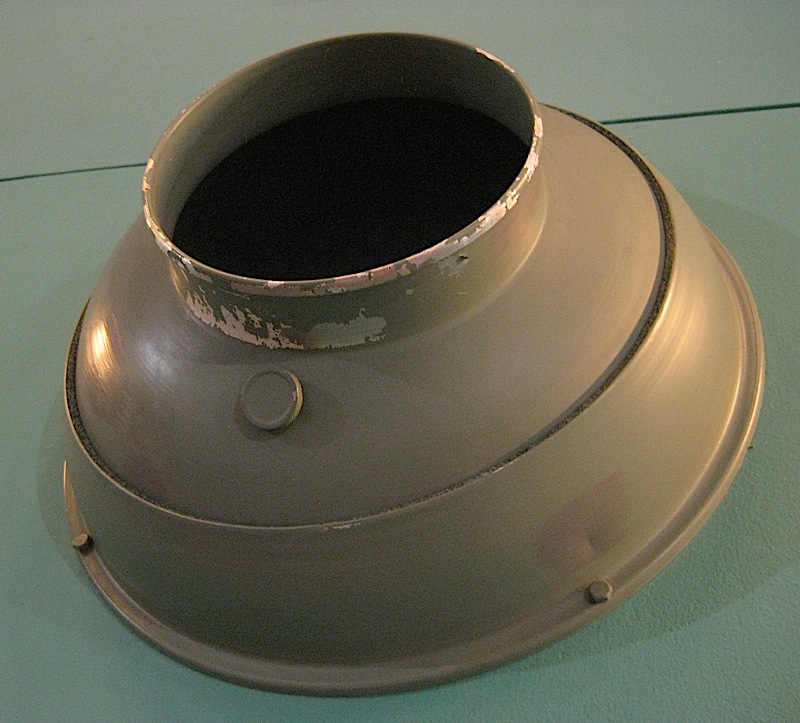
This looked like it could have been a WWII bomb or a telescope.
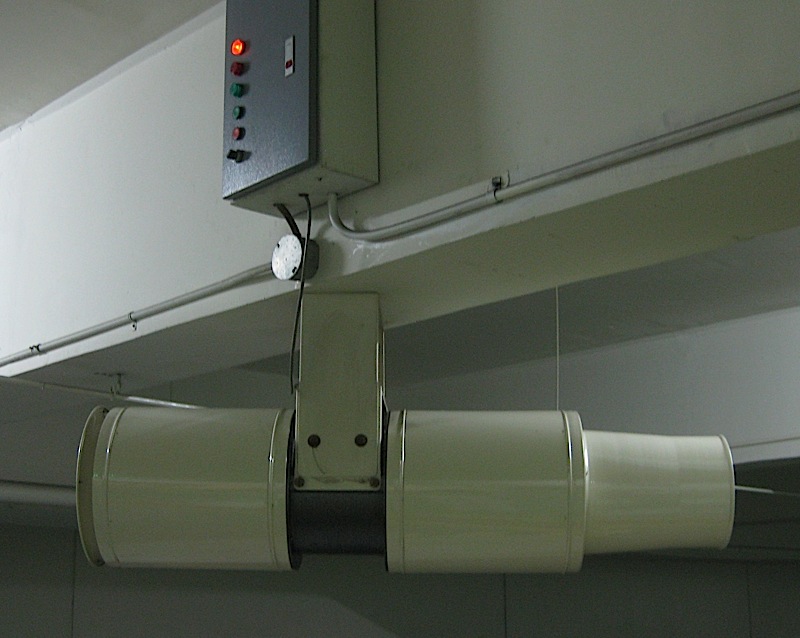
But it's just an exhaust fan in the parking building.
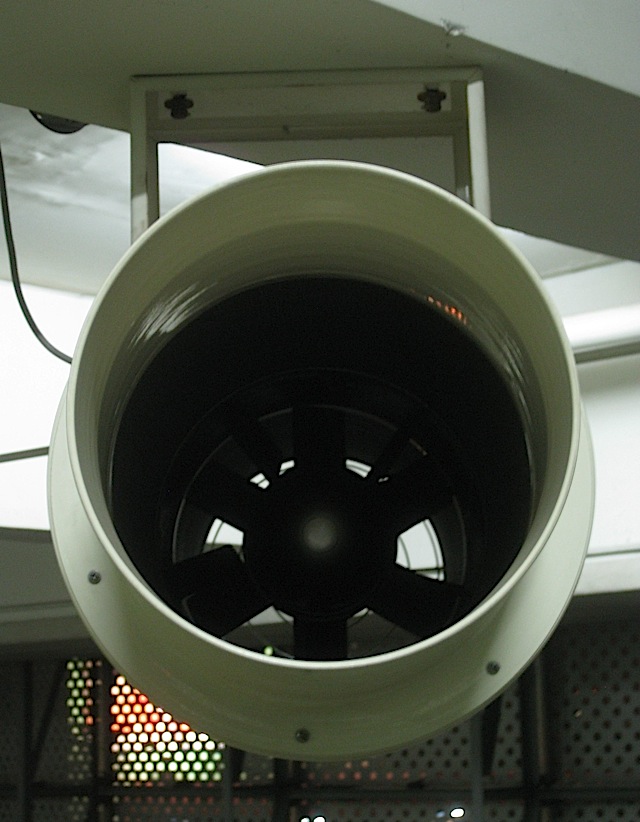
An air conditioner vent at the Sky Dome amphitheater.

This looked like it could have been a WWII bomb or a telescope.

But it's just an exhaust fan in the parking building.

August 8, 2010
Safe travel
Santa Maria della Strada parish church in Quezon City has a lovely outdoor columbarium. I find it fitting for Our Lady of the Way to be watching over those who have traveled on before us.
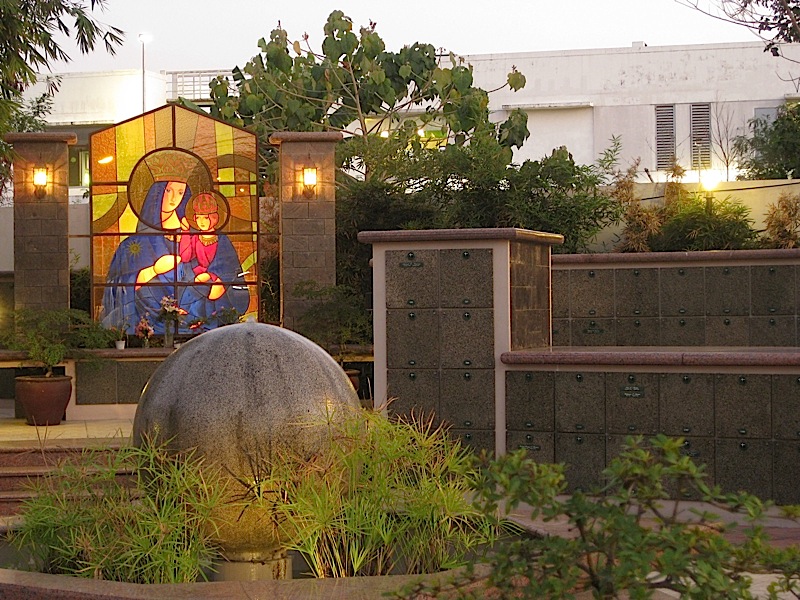

August 7, 2010
Secular relic
After Philippine National Hero Jose Rizal was executed by the Spanish colonial government in 1896, he was buried in the Paco Cemetery with no identification on his grave. One of his sisters went around the cemetery and, seeing freshly turned earth on one grave site, asked the caretaker to mark it with "RPJ," Rizal's initials in reverse. After the Philippines declared independence from Spain two years later, she retrieved her brother's remains, which are now enshrined at the Rizal Monument in Luneta, the place of Rizal's execution. One bone with a bullet wound was enshrined separately in a glass urn which is kept in a glass case at the Rizal Shrine in Fort Santiago, where Rizal was imprisoned before his execution.
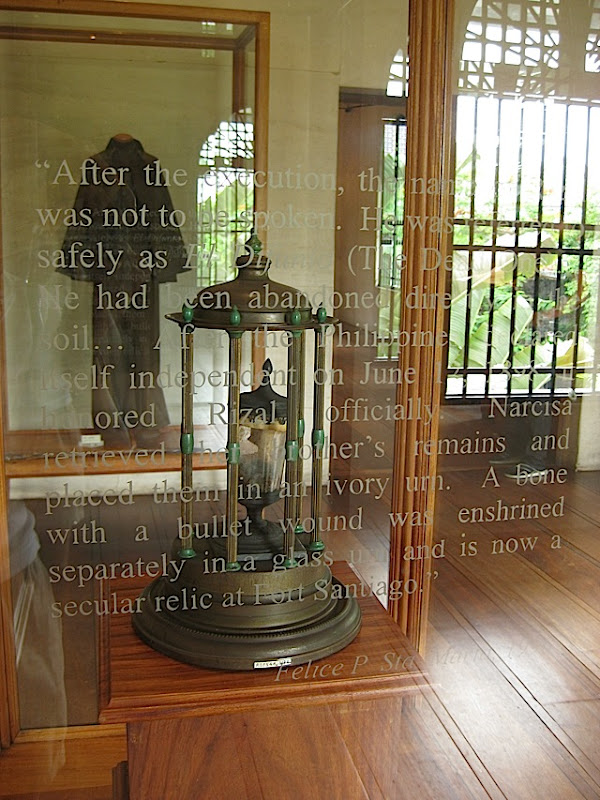


See what's reflecting what at James' Weekend Reflections.

August 6, 2010
Hang on
For those who have been intrigued by that uniquely Filipino mode of public transportation, the jeepney, here's what it's like riding in one. It has two long bench-like seats at the sides where passengers sit thigh-to-thigh and elbow-to-elbow when the jeepney is full. There are no seat belts, just bars on the ceiling to hang on to so you don't slip and slide on the seat (especially when the driver makes sudden turns or stops). You pay the driver directly and to do so, you either have to scoot on over beside him (if the jeepney is empty) or the money gets passed from passenger to passenger until it's handed to him (or to you, if you have change). Because he also collects the fare, the driver has to keep track of which passenger has paid and who has not, aside from trying to keep his eye on the road, of course.
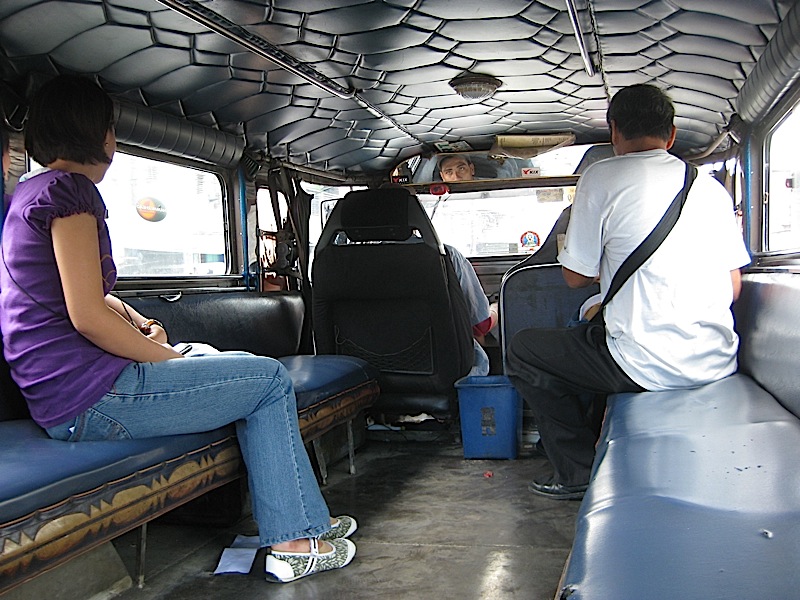
Read my title again. I mean it.
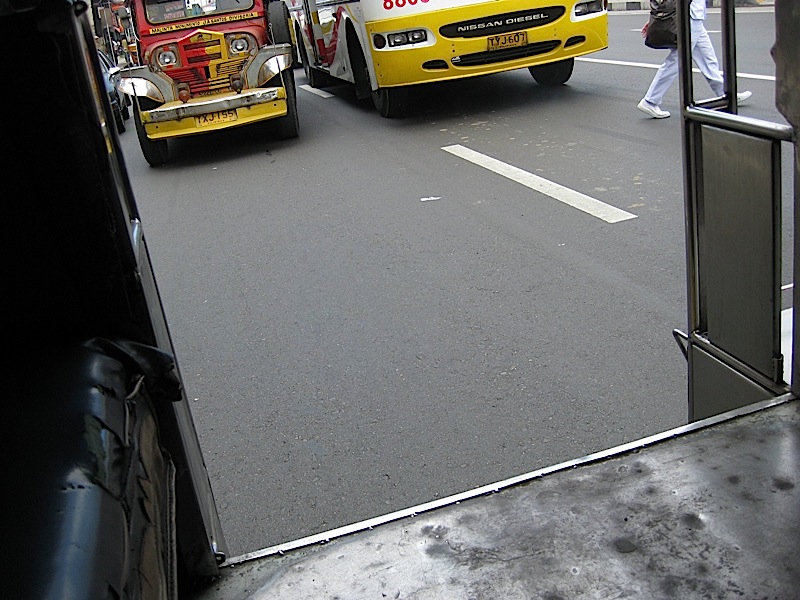
I'm not against jeepneys for public transportation. They are very convenient—they can travel routes that big buses cannot because the roads are narrow, and which tricycles cannot because they're too far. But I really think it's high time that they get a complete redesign.

Read my title again. I mean it.

I'm not against jeepneys for public transportation. They are very convenient—they can travel routes that big buses cannot because the roads are narrow, and which tricycles cannot because they're too far. But I really think it's high time that they get a complete redesign.
August 5, 2010
Child magnet
Kentucky-based Dippin' Dots has been available in Manila for several years now. I have yet to meet a child who doesn't like their ice cream.
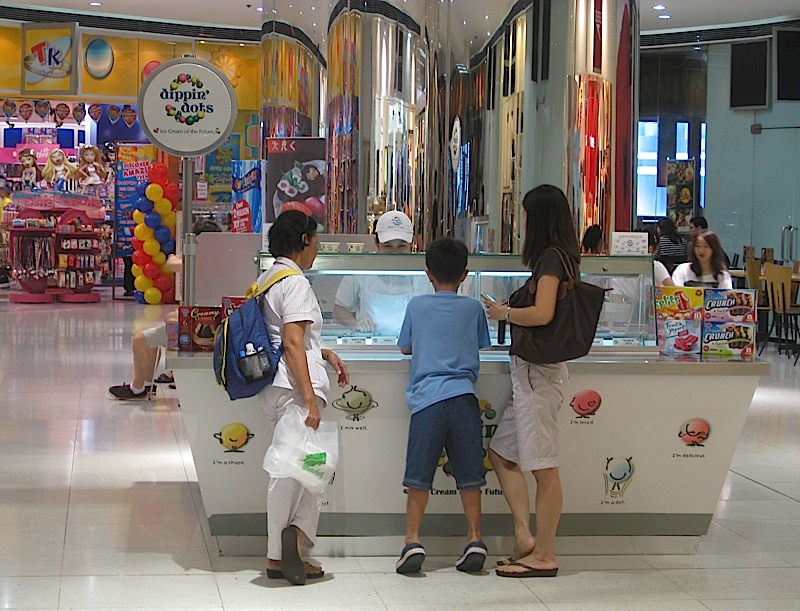
But really, how can one resist such fun ice cream dots?

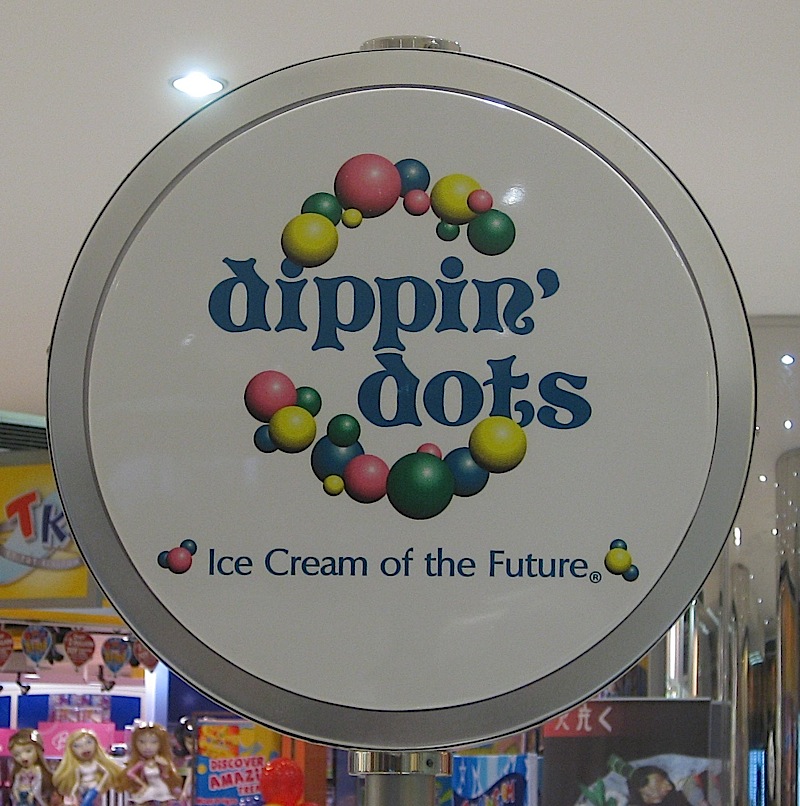

But really, how can one resist such fun ice cream dots?


Posted by
Hilda
23 comments:
August 4, 2010
Ungrape
I have already featured coconut wine and sugarcane liquor, and the deadly, distilled lambanog made from the sap of coconut flowers. Now let me present a more genteel locally-produced fruit wine. Bignay (Antidesma bunius) is a fruit tree native to Southeast Asia which produces clusters of little round berries. They grow wild in the Philippines and several companies make a light, sweet, slightly acidic wine from the ripe, red berries. Patubas (which is Hiligaynon for "harvest") also makes other fruit wines from duhat, guyabano and pineapple.
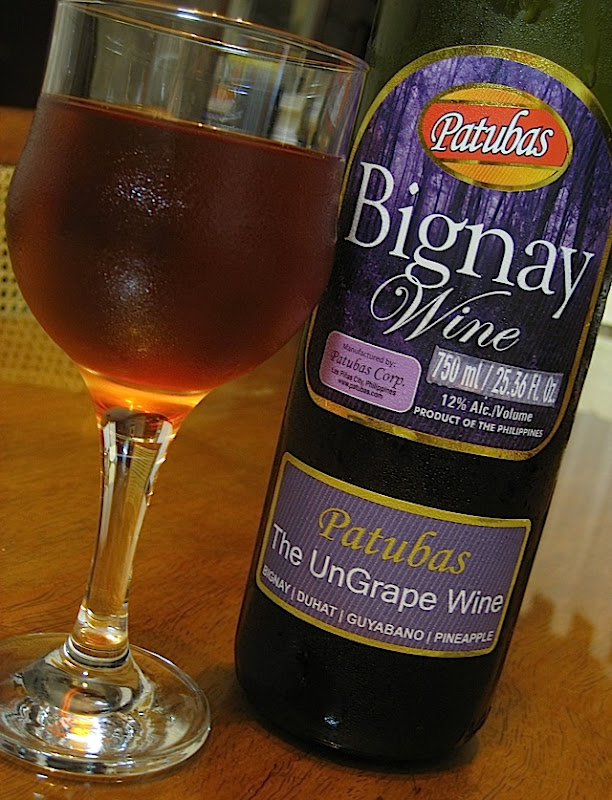

August 3, 2010
Music for my soul
The conditions were again too difficult for my little camera, but I'm posting this photo anyway because I want you all to meet one of my favorite local bands: Kalayo. The genre that their music falls under is World Music but before the term was coined, I'd known it as Neo-Ethnic: Filipino tribal melodies, primal beats, strong percussion and chanting, using both traditional and modern instruments or even, like the djembe, instruments from other cultures. Kalayo is Sammy Asuncion (guitar), Kenway Barcelona (bass, who alternates for Louie Talan), Reli de Vera (drum set), DJ Rodriguez (snare, djembe), Budeths Casinto (djembe, shakers and other percussion instruments) and Boy Garovillo (djembe, kubing or jaw harp, shaker).
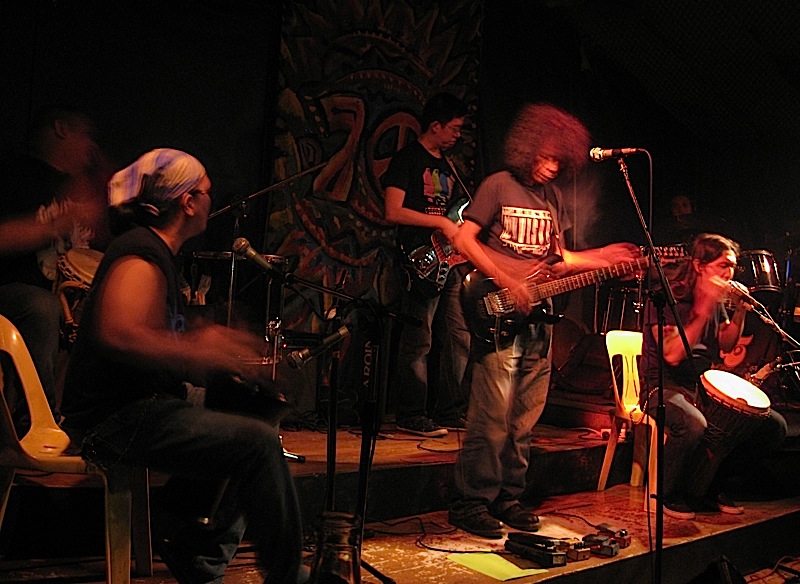
Until late 2008, when the membership went through a major change, the band was known as Pinikpikan and the song below (no video except a still image of the CD cover) is the title song from their Kaamulan album.

Until late 2008, when the membership went through a major change, the band was known as Pinikpikan and the song below (no video except a still image of the CD cover) is the title song from their Kaamulan album.
August 2, 2010
Touché
We had lunch with my husband's family at The Podium mall yesterday, where a fencing competition was going on. Sponsored by the mall and the Philippine Fencing Association, the competition was also meant to raise awareness about the sport, promote the association and, hopefully, excite enough interest from young mall-goers so they will take up fencing. The little girl in the pink shirt was watching the competition with complete attention (though her older sister wasn't)—think she'll ask her parents for epee, foil or sabre lessons some time soon?


August 1, 2010
A puff of wind
THEME DAY: BRIGHT COLORS • The outdoor Sunset Bar of Sofitel Manila has a small platform for performances and cultural presentations. The row of satin banners which serves as its backdrop is reminiscent of the colorful sail of the traditional Mindanao Muslim boat called the vinta. Quite appropriate since the hotel is right beside Manila Bay.

The colors of the rainbow—and more—from CDP bloggers around the world. Click here to view thumbnails for all participants.

The colors of the rainbow—and more—from CDP bloggers around the world. Click here to view thumbnails for all participants.
Subscribe to:
Posts (Atom)
